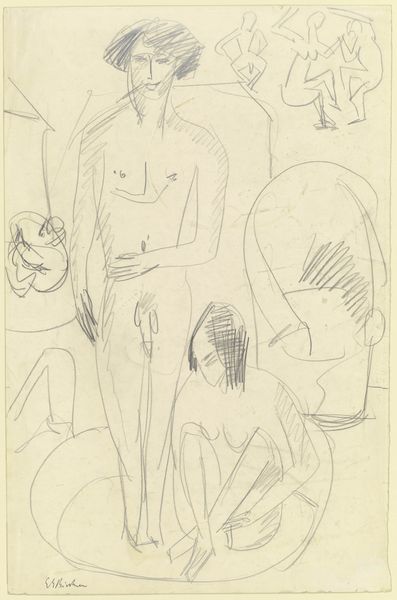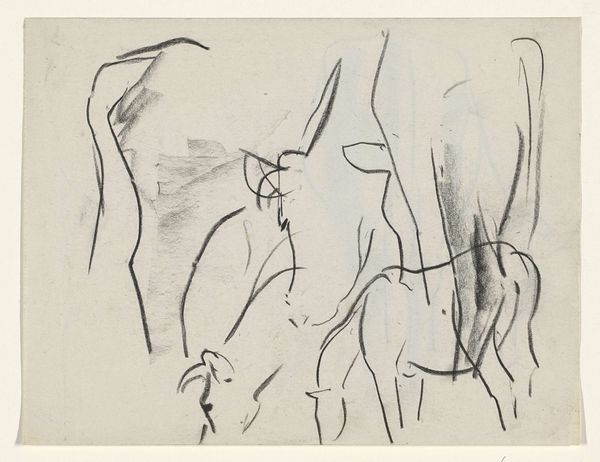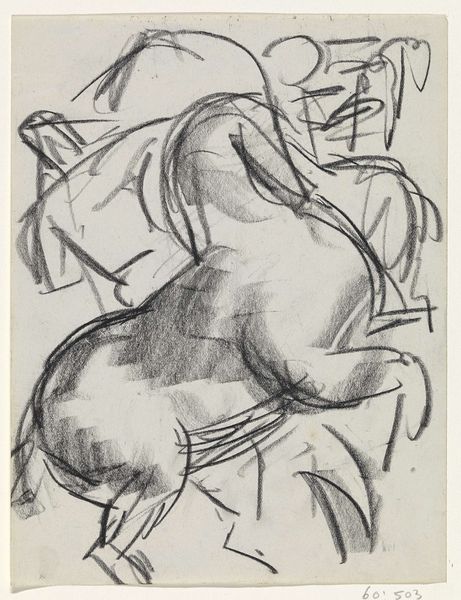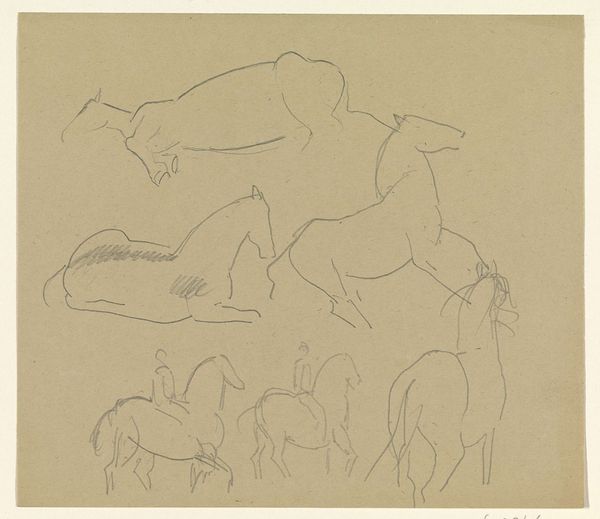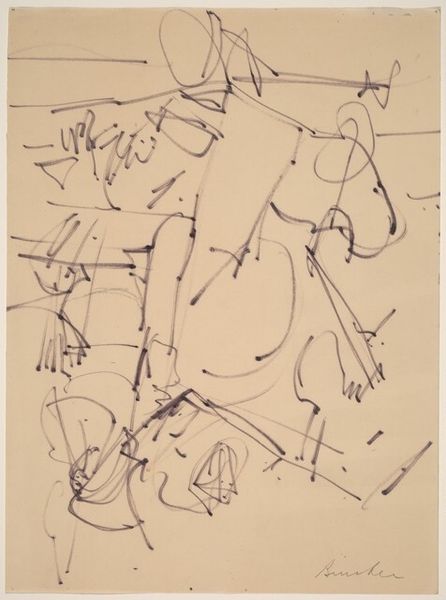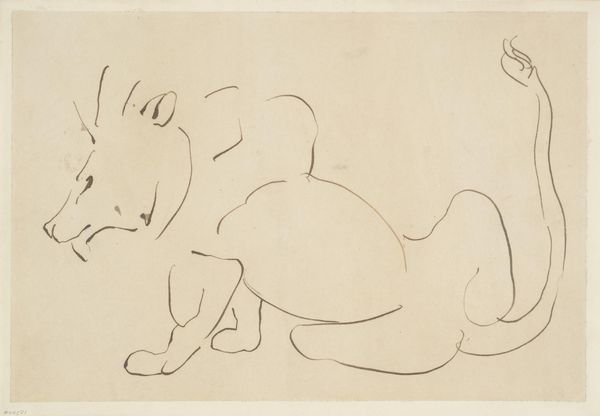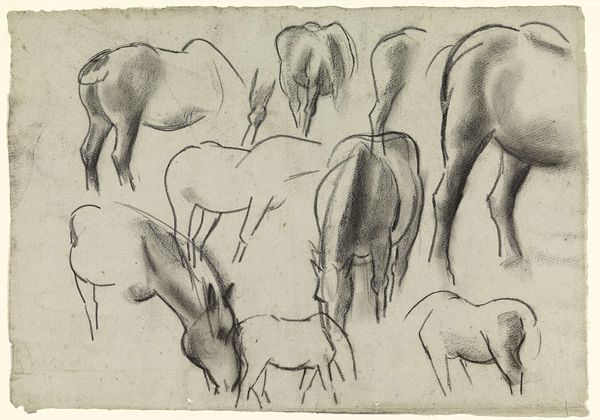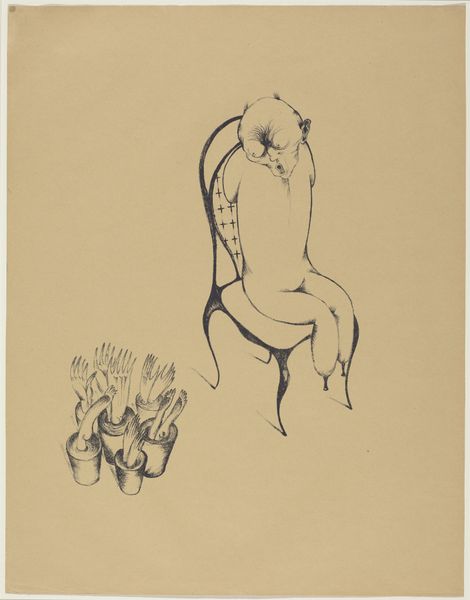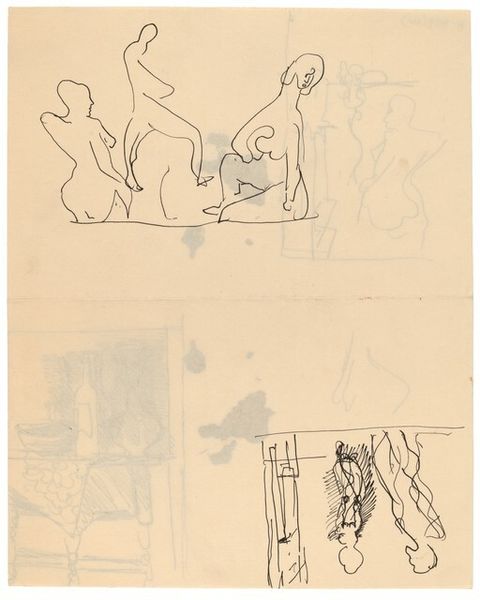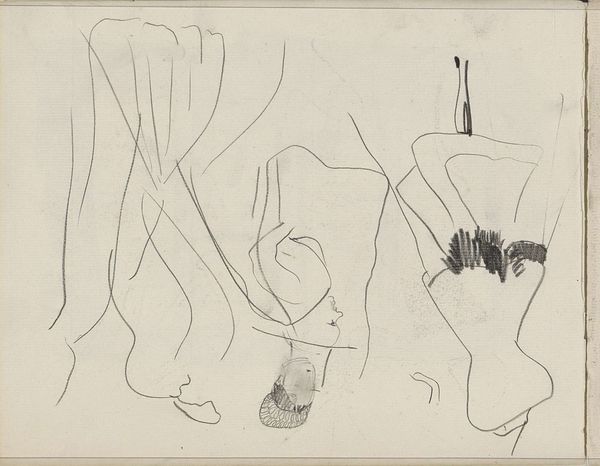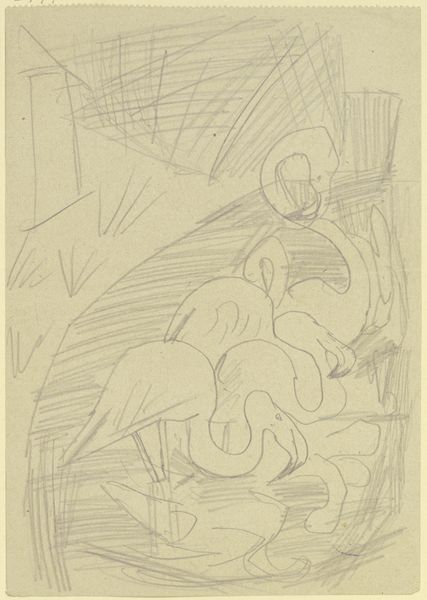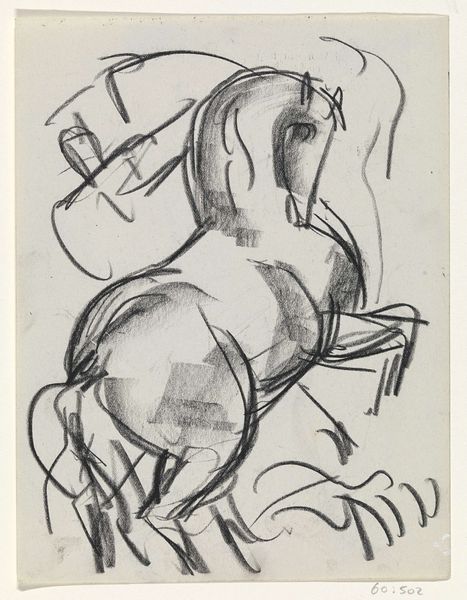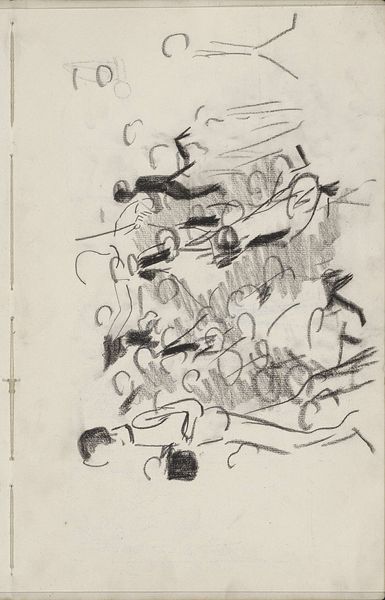
drawing, pencil
#
drawing
#
pen sketch
#
landscape
#
figuration
#
pencil
#
genre-painting
Dimensions: height 212 mm, width 163 mm
Copyright: Rijks Museum: Open Domain
Editor: So, this drawing is titled “Boeren werken op het land,” which translates to "Farmers Working the Land.” It's attributed to Leo Gestel and thought to be created sometime between 1891 and 1941. It’s a pen and pencil drawing that almost looks like a quick sketch. It feels unfinished but powerful. What stands out to you? Curator: What captures my eye are the repeated figures, hunched over, absorbed in labor. Each pose, slightly different, suggests a unique burden and resilience. The artist wasn't just capturing a scene; he was capturing a feeling, a memory. The rhythmic lines – almost hieroglyphic – remind me of ancient agricultural societies, of the perpetual human connection to the land. Does it bring forth particular symbols for you? Editor: The figures themselves feel almost like symbols—archetypes of labor. They are stripped down to basic forms; there's no individual identity given to them, they almost seem like one entity. Curator: Exactly. Think about the backbreaking nature of the work itself – the symbolism inherent in that posture. Bent double, the figures are literally bowed to the earth, an image deeply rooted in cultural memory and respect, and indeed struggle. Now, consider what isn't there – the details, the faces. This absence almost amplifies the symbolic weight of their collective effort, the land is being nourished by their presence. How does that emptiness strike you? Editor: It feels deliberate, universalizing their experience. If the faces were included it would distract from this universality. Gestel represents labor by evoking and abstracting, almost like a ritualistic motion. Curator: Yes. He taps into something ancient, doesn't he? By simplifying and stylizing, Gestel accesses the deep well of symbolism that agriculture holds for humanity. He captures not just a scene but the enduring relationship between people and the earth. What an economy of expression! Editor: That’s a great point. I didn’t initially see it that way, but now I appreciate how the simple lines contribute to such a weighty representation of the timeless relationship between humans and the land. It gives new meaning to seeing figures at work in landscapes. Curator: Indeed, it reminds us that imagery carries immense cultural and psychological weight that we should all be aware of!
Comments
No comments
Be the first to comment and join the conversation on the ultimate creative platform.
